Role of cytochrome P450 2E1 in protein nitration and ubiquitin-mediated degradation during acetaminophen toxicity
- PMID: 19660437
- PMCID: PMC2784150
- DOI: 10.1016/j.bcp.2009.07.016
Role of cytochrome P450 2E1 in protein nitration and ubiquitin-mediated degradation during acetaminophen toxicity
Abstract
It is well established that following a toxic dose of acetaminophen (APAP), nitrotyrosine protein adducts (3-NT), a hallmark of peroxynitrite production, were colocalized with necrotic hepatic centrilobular regions where cytochrome P450 2E1 (CYP2E1) is highly expressed, suggesting that 3-NT formation may be essential in APAP-mediated toxicity. This study was aimed at investigating the relationship between CYP2E1 and nitration (3-NT formation) followed by ubiquitin-mediated degradation of proteins in wild-type and Cyp2e1-null mice exposed to APAP (200 and 400mg/kg) for 4 and 24h. Markedly increased centrilobular liver necrosis and 3-NT formation were only observed in APAP-exposed wild-type mice in a dose- and time-dependent manner, confirming an important role for CYP2E1 in APAP biotransformation and toxicity. However, the pattern of 3-NT protein adducts, not accompanied by concurrent activation of nitric oxide synthase (NOS), was similar to that of protein ubiquitination. Immunoblot analysis further revealed that immunoprecipitated nitrated proteins were ubiquitinated in APAP-exposed wild-type mice, confirming the fact that nitrated proteins are more susceptible than the native proteins for ubiquitin-dependent degradation, resulting in shorter half-lives. For instance, cytosolic superoxide dismutase (SOD1) levels were clearly decreased and immunoprecipitated SOD1 was nitrated and ubiquitinated, likely leading to its accelerated degradation in APAP-exposed wild-type mice. These data suggest that CYP2E1 appears to play a key role in 3-NT formation, protein degradation, and liver damage, which is independent of NOS, and that decreased levels of many proteins in the wild-type mice (compared with Cyp2e1-null mice) likely contribute to APAP-related toxicity.
Figures
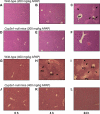
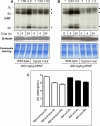
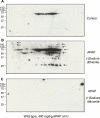

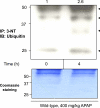
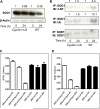
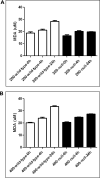
Similar articles
-
Protection against acetaminophen toxicity in CYP1A2 and CYP2E1 double-null mice.Toxicol Appl Pharmacol. 1998 Sep;152(1):193-9. doi: 10.1006/taap.1998.8501. Toxicol Appl Pharmacol. 1998. PMID: 9772215
-
Mice deficient in Cu,Zn-superoxide dismutase are resistant to acetaminophen toxicity.Biochem J. 2006 Nov 1;399(3):455-61. doi: 10.1042/BJ20060784. Biochem J. 2006. PMID: 16831125 Free PMC article.
-
Acetaminophen-induced hepatotoxicity in mice lacking inducible nitric oxide synthase activity.Nitric Oxide. 2001;5(5):432-41. doi: 10.1006/niox.2001.0385. Nitric Oxide. 2001. PMID: 11587558
-
Acetaminophen-induced hepatotoxicity and protein nitration in neuronal nitric-oxide synthase knockout mice.J Pharmacol Exp Ther. 2012 Jan;340(1):134-42. doi: 10.1124/jpet.111.184192. Epub 2011 Oct 14. J Pharmacol Exp Ther. 2012. PMID: 22001257 Free PMC article.
-
Acetaminophen-induced hepatotoxicity.Drug Metab Dispos. 2003 Dec;31(12):1499-506. doi: 10.1124/dmd.31.12.1499. Drug Metab Dispos. 2003. PMID: 14625346 Review.
Cited by
-
A novel upregulation of glutathione peroxidase 1 by knockout of liver-regenerating protein Reg3β aggravates acetaminophen-induced hepatic protein nitration.Free Radic Biol Med. 2013 Dec;65:291-300. doi: 10.1016/j.freeradbiomed.2013.06.034. Epub 2013 Jun 26. Free Radic Biol Med. 2013. PMID: 23811004 Free PMC article.
-
Transcriptomic signature, bioactivity and safety of a non-hepatotoxic analgesic generating AM404 in the midbrain PAG region.Sci Rep. 2024 May 15;14(1):11103. doi: 10.1038/s41598-024-61791-z. Sci Rep. 2024. PMID: 38750093 Free PMC article. Clinical Trial.
-
Lack of PPARα exacerbates lipopolysaccharide-induced liver toxicity through STAT1 inflammatory signaling and increased oxidative/nitrosative stress.Toxicol Lett. 2011 Apr 10;202(1):23-9. doi: 10.1016/j.toxlet.2011.01.013. Epub 2011 Jan 22. Toxicol Lett. 2011. PMID: 21262334 Free PMC article.
-
Cytochrome P450-2E1 promotes aging-related hepatic steatosis, apoptosis and fibrosis through increased nitroxidative stress.Free Radic Biol Med. 2016 Feb;91:188-202. doi: 10.1016/j.freeradbiomed.2015.12.016. Epub 2015 Dec 17. Free Radic Biol Med. 2016. PMID: 26703967 Free PMC article.
-
Coexistence of hyperlipidemia and acute cerebral ischemia/reperfusion induces severe liver damage in a rat model.World J Gastroenterol. 2012 Sep 21;18(35):4934-43. doi: 10.3748/wjg.v18.i35.4934. World J Gastroenterol. 2012. PMID: 23002367 Free PMC article.
References
-
- Thomas SH. Paracetamol (acetaminophen) poisoning. Pharmacol Ther. 1993;60:91–120. - PubMed
-
- Ostapowicz G, Fontana RJ, Schiodt FV, Larson A, Davern TJ, Han SH, et al. Results of a prospective study of acute liver failure at 17 tertiary care centers in the United States. Ann Intern Med. 2002;137:947–54. - PubMed
-
- James LP, Mayeux PR, Hinson JA. Acetaminophen-induced hepatotoxicity. Drug Metab Dispos. 2003;31:1499–506. - PubMed
-
- Kon K, Kim JS, Jaeschke H, Lemasters JJ. Mitochondrial permeability transition in acetaminophen-induced necrosis and apoptosis of cultured mouse hepatocytes. Hepatology. 2004;40:1170–9. - PubMed
Publication types
MeSH terms
Substances
Grants and funding
LinkOut - more resources
Full Text Sources
Other Literature Sources
Research Materials
Miscellaneous

